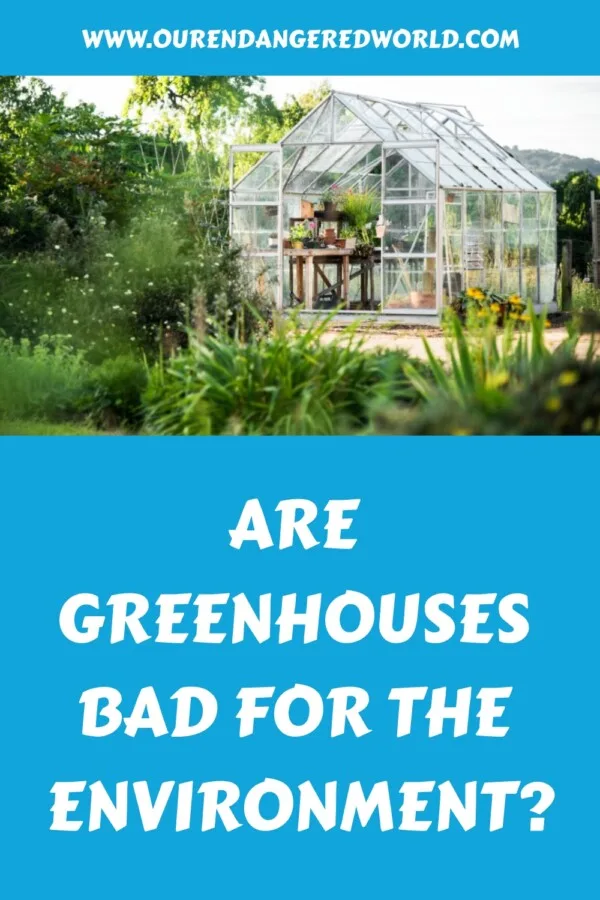As a global community, we are becoming more aware of the effects of greenhouse gases and our impact on the environment. Around the world, climate conditions have started to change to a degree that can no longer be swept under the rug. Among the many other factors that are harmed by this, plant life on Earth is increasingly under threat. Greenhouses are a partial solution to this issue, but do greenhouses make greenhouse gases? Are greenhouses bad?
The ability to cultivate indoor plants inside greenhouses at a constant temperature currently allows for the survival of plants under threat. Greenhouses, however, aren’t the solution for every plant, and there is a debate among some as to whether or not they actually do more harm than good.
Greenhouses may appear sustainable since they allow you to cultivate plants that are not native to your location, reducing food miles. Some greenhouses use a lot of electricity which has to be generated somewhere (often through fossil fuels) and may add to the pollution problem due to pesticides, making them less friendly than you think. Here is all the information you need to know about greenhouses’ effects on the environment.
What are Greenhouses?
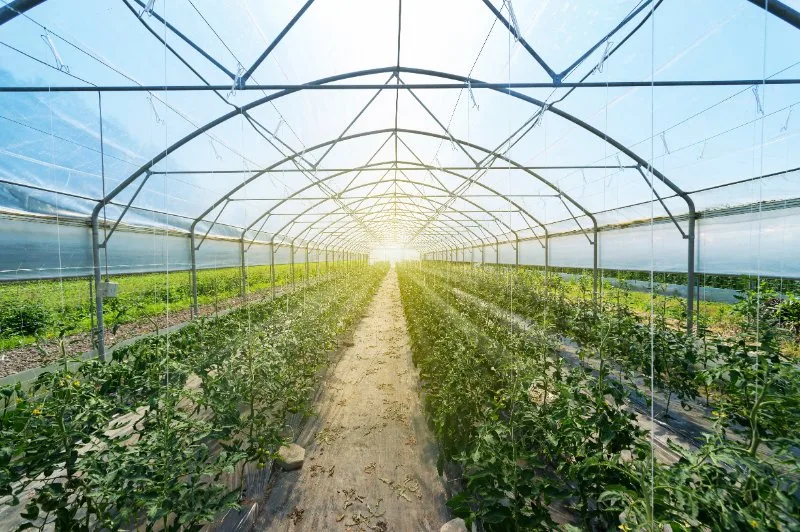
Glass-and-transparent greenhouses shelter plants outside their ideal growing seasons. A typical greenhouse is a metal structure that holds the glass panes in place. Many commercial greenhouses not only have the ability to trap heat but also have autonomous water systems.
People may reduce their overall carbon footprint by growing food in their own private greenhouses in their backyard. Around 37% of the world’s greenhouse gas emissions come from the food industry’s traditional growing, packing, and distribution methods. To lessen the pollution brought on by transportation, produce should be grown closer to where it is needed.
Greenhouses help improve regional ecological conditions by increasing vegetation. All plants absorb carbon dioxide and convert it into pure oxygen through photosynthesis. Although they remove air pollutants and lessen the negative consequences of food production and transportation, greenhouses can also hurt sustainability.
See Related: How to Heat a Greenhouse Without Electricity
What are Greenhouse Gases? When did Greenhouse Gases start to cause issues?
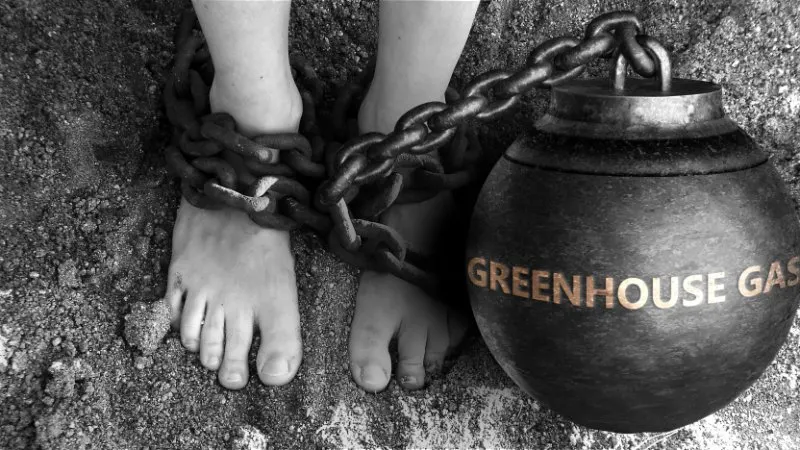
Looking at atmospheric concentrations over the last 2000 years, we can observe that until the 18th Century, levels were steady primarily, about 270 to 285 parts per million (ppm). Since the Industrial Revolution, the amount of CO2 in the atmosphere has steadily risen and boomed since the mid-20th Century.
After over a century of trending upward, the worldwide annual mean temperature curve started to increase drastically in the 1980s. It rose so much so that “global warming” (now known as climate change) became an inconvenient truth that needed to be addressed.
While governments and most industries dragged their heels or even lied about the situation in order to avoid blame or the costs of dealing with global warming, environmental NGOs (Non-Governmental Organizations) started promoting worldwide ecological preservation to stop global warming from getting worse.
How have global Greenhouse Gases concentrations changed over time?
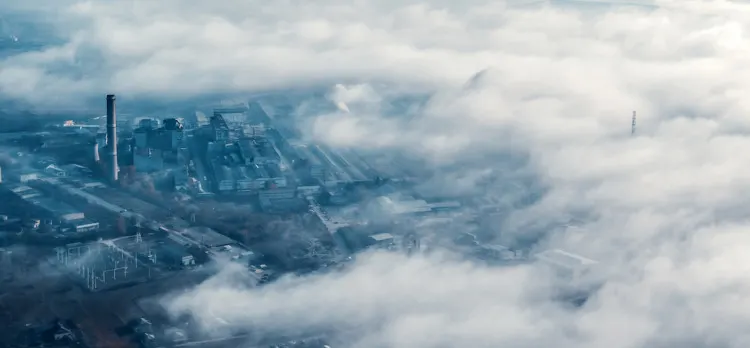
The amount of CO2 in the atmosphere is at its most significant level in at least 800,000 years. Our emissions must not only stabilize but also dramatically decline just to start stabilizing (let alone reducing) atmospheric CO2 concentrations. Now that greenhouse gas concentrations have surpassed the 400ppm mark, they are at their highest point for three million years.
Even if CO2 emissions were to stabilize, atmospheric concentrations would not. This is because CO2 builds up in the atmosphere according to a “residence time.” If we stopped generating CO2 all at once, it would take several hundred years for the majority of human emissions to be eliminated from the atmosphere.
See Related: How to Install a Greenhouse [Step-by-Step Guideline]
Greenhouse Gases’ Impact on Global Warming
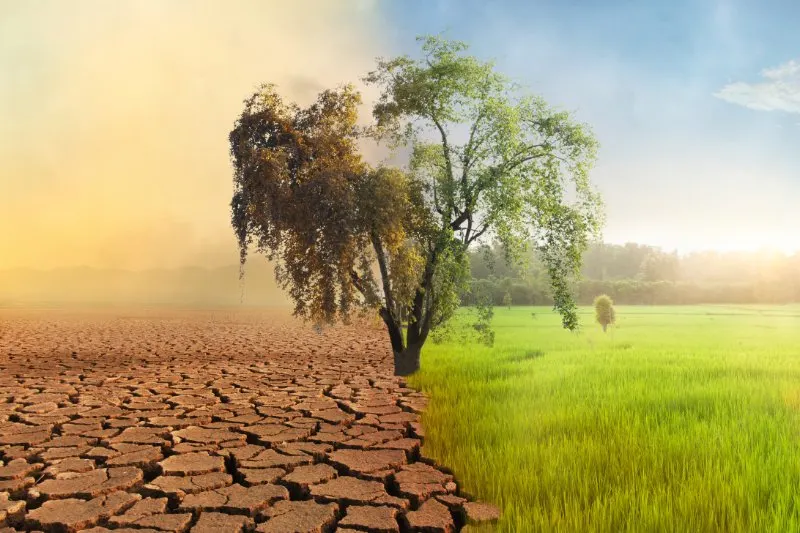
The gases on the earth’s surface that absorb radiation are known as “greenhouse gases” or “glass walls” since they are substantially responsible for the greenhouse effect.
The Environmental Protection Agency (EPA) lists carbon dioxide (CO2), methane (CH4), nitrous oxide (N2O), and fluorinated gases (e.g. hydrofluorocarbons, perfluorocarbons, sulfur hexafluoride, and nitrogen trifluoride) as the four major greenhouse gas contributors.
The most abundant greenhouse gas with the lengthiest atmospheric duration, CO2, has the most significant effect on global warming.
See Related: Best Solar Panels for Greenhouse: Top Picks
Sources of Greenhouse Gases
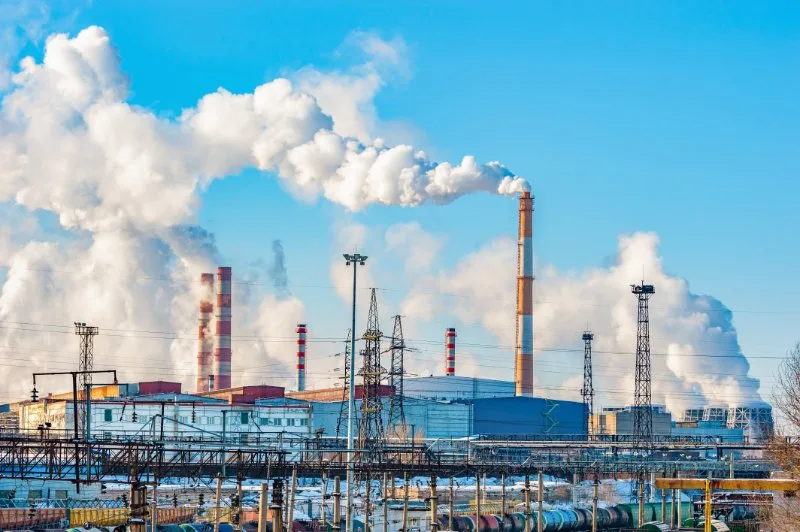
The link between human activity and the increase in greenhouse gases has been proven time and time again. The biggest one to worry about is carbon dioxide.
Most carbon dioxide gas emissions are released by human activity. Energy-related activities (such as the burning of fossil fuels in the electric utility and transportation sectors), agriculture, changing land uses, waste management and treatment practices, and other industrial operations are all examples of anthropogenic causes.
Methane, nitrous oxide, carbon dioxide, and other manmade compounds are among the main greenhouse gases.
Carbon Dioxide
Since it now contributes the most to the warming effect caused by human activity, carbon dioxide is sometimes cited as the most significant anthropogenic greenhouse gas. Due to burning fossil fuels and other emissions sources, human activities have increased atmospheric loadings of carbon dioxide, which occurs naturally as a component of the global carbon cycle.
Oceans and plants are examples of natural carbon dioxide sink that help control atmospheric concentrations, although human actions can impede or facilitate these processes (such as deforestation or polluting the ocean).
Methane
Human activities such as coal mining, hydroelectric plants, power generation plants solar radiation, artificial lighting, free solar energy buildings, waste heat decomposition in landfills, agriculture, and digestive processes in animals (cows farting) all contribute to methane emissions. Wetlands and termite mounds are two examples of natural methane sources.
Nitrous oxide
Nitrous oxide is produced as a byproduct of agricultural and industrial hothouses, as well as the burning of solid waste and fossil fuel combustion.
See Related: Best Glass Greenhouses in 2023
Different Synthetic Compounds
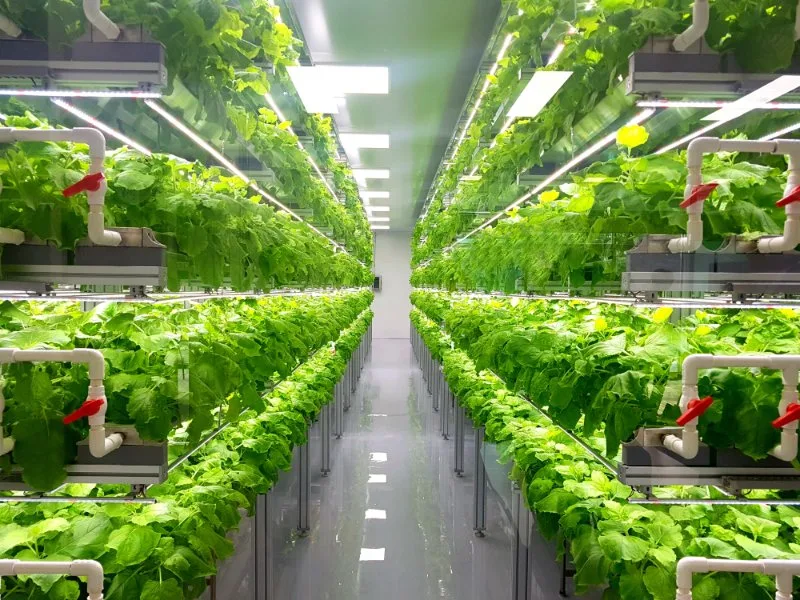
As a result of commercial and factory farming, industrial processes, or domestic applications, various synthetic compounds, such as hydrofluorocarbons, perfluorocarbons, sulfur hexafluoride, and other synthetic gases, are emitted into the atmosphere.
Other Greenhouse Gases
It’s recognized that a wide variety of different gases may trap heat in the environment. Examples include ozone, which naturally occurs on the earth’s surface and is found in the internal atmosphere, and which naturally occurs as a component of Earth’s habitable cycle. Ironically, it’s this layer of ozone that protects us from the sun’s most harmful radiation that traps greenhouse gases, much like the glass of a greenhouse.
See Related: Best Portable Greenhouses to Buy Today
Greenhouse Gases and Greenhouses: What’s the Difference?
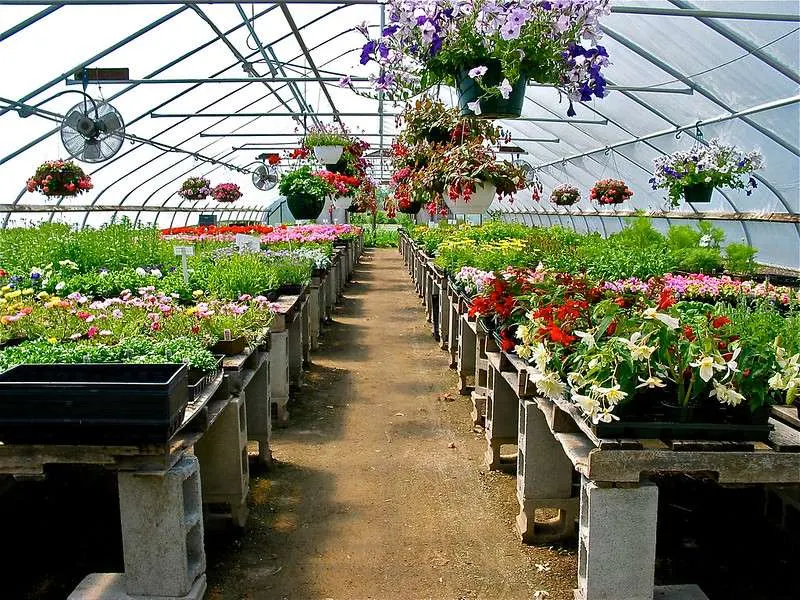
Erm, lots.
One is a transparent-walled building for growing plants, the other is a term to describe certain gases, emitted by human activity that are trapped under the ozone layer which is changing the global climate.
That said, some people might need a little help distinguishing between greenhouse buildings and greenhouse gases before we answer the question, “are greenhouses bad?”
When heat is trapped in the atmosphere for an extended period of time, the temperature of the entire planet increases, the principal greenhouse gases are carbon dioxide, nitrous oxide, and methane. Since the beginning of the industrial period, temperatures have risen by 0.85°C, and emissions have climbed by 40%.
The good news is that greenhouses cause much less damage to the environment than greenhouse gases – much less. I mean, greenhouses are almost harmless after construction is finished, and they help with household sustainability. Yes, there are benefits and drawbacks to building a greenhouse, but by employing green building methods, individuals can reduce emissions.
Is the environmental impact of Greenhouses friendly?
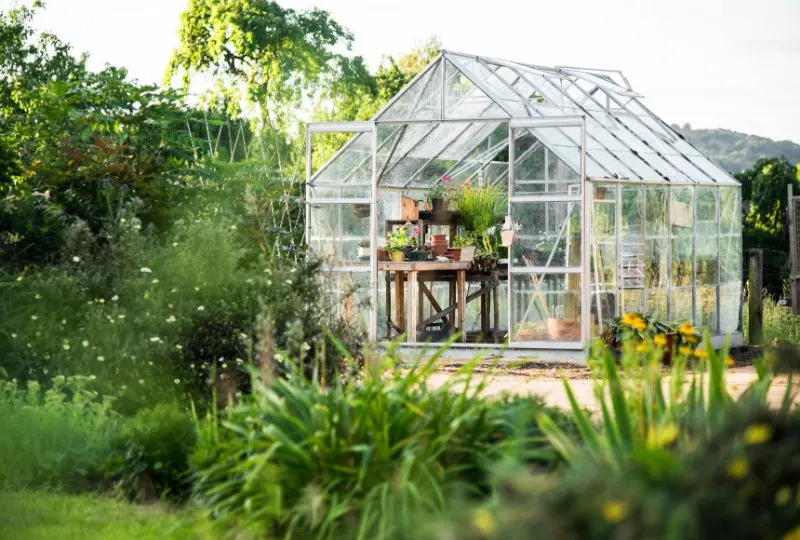
Do greenhouses promote an eco-friendly lifestyle, or are they a smaller-scale environmental disaster? Well, overall, it’s definitely more the former than it is the latter.
Growing plants under glass is a practice that is almost as ancient as the glass itself, and it is regarded as a crucial aspect of many agricultural and horticultural endeavors. The advantages are clear-cut since the greenhouse offers a controlled atmosphere that may promote optimal development, allowing plants to be raised regardless of the weather.
Many food crops’ growth seasons are extended as a result, which means more people can be fed and it can have financial benefits too, as commodities harvested earlier or later in the year can fetch higher prices.
With so many benefits, it may seem impossible that a greenhouse could ever have any environmental drawbacks, but like everything else on this planet, they aren’t perfect.
Manufacturing Greenhouses
Sourcing the materials needed to build greenhouses isn’t the cleanest process in the world, particularly if the greenhouse in question utilizes a lot of plastics. Most plastics are made from oil.
Metal-framed greenhouses aren’t much better, as the metal needs to be mined and smelted. Both of these processes are pretty harmful to the environment.
And even wood-framed greenhouses have their issues! Wood frames mean cutting down more trees, which filter CO2. And because wood is not as durable or long-lasting as metal and some plastics, you may end up having to replace parts of the greenhouse (or maybe even the whole thing) if it falls into disrepair.
Heating Greenhouses
When the sun’s rays are insufficient, some greenhouses rely on heaters. Commercial glass houses in particular use these since the business will need extra heat to boost production and efficiency if the sun isn’t playing ball. The energy used to heat these greenhouses typically increases pollution, unless it is from a green source like wind, hydro or solar.
Pesticides
Pesticides may keep plants safer from creepy crawlies, but a lot of pesticides are harmful to the atmosphere. Then there’s also the issue of using them at all, even the more natural pesticides. Fewer insects, even the ones that eat our plants, mean fewer pollinators. Fewer pollinators mean less food.
You can see where this is going. The simple fact of the matter is if we kill all the bugs, all life on Earth ends. All of it.
Are Greenhouse Gases produced in Greenhouses?
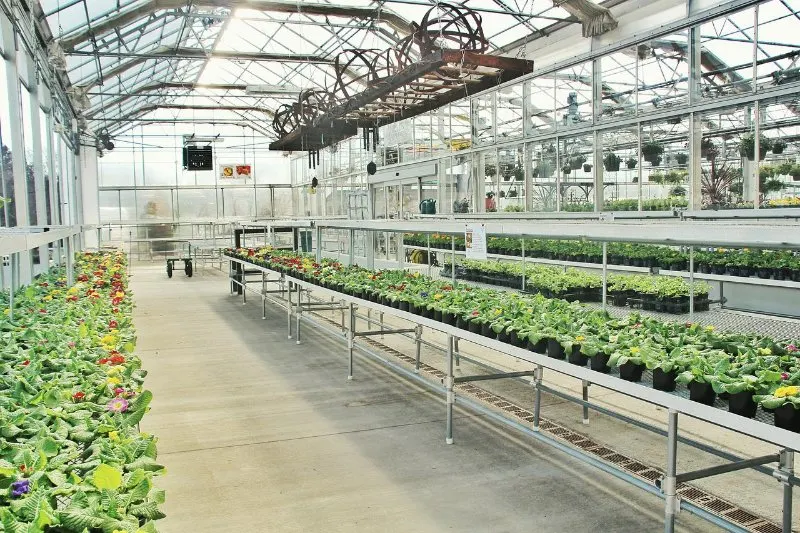
It’s true that some indirect greenhouse gas production occurs in some greenhouses. Because some heated greenhouses consume energy that still depends on fossil fuels, they may increase greenhouse gas emissions. It is, therefore, preferable to use renewable electricity wherever feasible to power heaters, water sprayers, humidifiers, and lighting.
Solar panels are an option, but only possible if you can afford to sacrifice some room outside the greenhouse since it’s not practical to install them on the roofs of greenhouses as that kind of defeats the purpose of having a glass roof.
See Related: How to Build a Hydroponic Greenhouse
Can Greenhouses be Recycled?
Usually, greenhouses may be recycled. Glass and metal can be recycled endlessly. Some types of plastic can be recycled, and wood can be recycled or composted.
Obviously, greenhouses are too large to fit in a household recycling container, and the facilities to which this garbage is shipped won’t have the necessary equipment to process them. Instead, greenhouses must be dismantled and delivered to specific recycling sites.
So, how can humans reduce the level of Greenhouse Gases?

Even while we cannot stop global warming overnight, we can decrease human emissions and the heat-trapping of gases and soot to decrease the rate and limit the warming.
Even with these measures in place, Earth’s temperature will continue to increase for a few decades even if all human emissions of heat-trapping gases were to stop immediately because ocean currents would transport extra heat stored in the deep ocean up to the surface. The Earth’s temperature would eventually normalize after this surplus heat vented into space. According to experts, the warming caused by this “hidden” heat won’t likely exceed 0.9° Fahrenheit.
Making a Low-Emission Greenhouse!
By lowering worksite pollution, and using greener materials the building sector is reacting to expectations from eco-consumers. To remove tailpipe emissions, engineers created electrified versions of construction equipment. Contractors can use electric backhoes and excavators to lessen the greenhouse effect.
But what can you do to help limit greenhouse gases with your own greenhouse? Build an eco-friendly one, of course!
You can use recycled steel, recycled plastic, recycled glass, and repurposed timber to reduce a project’s footprint. By using recycled building materials, greenhouses can become more inexpensive and eco-friendly home additions.
Future of Our Planet
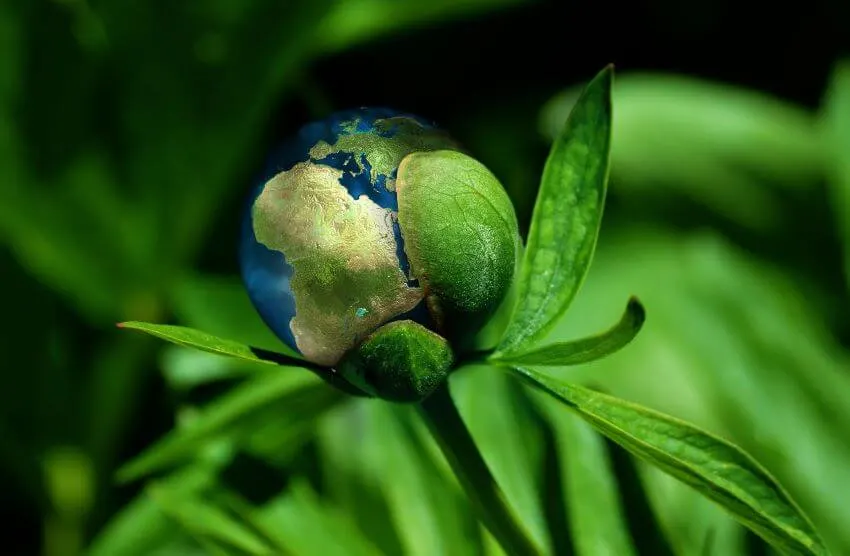
For the first time in decades, worldwide carbon dioxide emissions decreased in 2020 (6.4% globally and 13% alone in the U.S.). The world still has to reduce its CO2 emissions by 7.6% over the next ten years in order to keep global warming to the 2.7 degrees F (1.5 degrees C) objective established by the Paris Agreement. We have a long way to go.
Want to do your part in cutting greenhouse gases? Build yourself an eco-friendly greenhouse from recycled materials and start growing your own yummy produce! Not only will you get the satisfaction of home-grown goods, but also the knowledge that you aren’t making your carbon footprint any bigger than it could be!
FAQs
Is greenhouse bad for the environment?
Greenhouses are not inherently bad for the environment. However, the use of certain materials and practices in greenhouse construction and operation can have negative environmental impacts.
For example, the use of fossil fuels to heat greenhouses can contribute to greenhouse gas emissions and climate change. Additionally, improper disposal of greenhouse waste, such as plastic pots and trays, can contribute to pollution.
Is greenhouse good or bad?
Greenhouses are structures used for growing plants in a controlled environment. They are generally considered to be a good thing because they allow for year-round cultivation of crops and protect plants from pests and harsh weather conditions. However, there are concerns about the environmental impact of greenhouses, particularly in terms of energy consumption and waste management.
Why are greenhouses bad for environment?
Greenhouses are structures used for growing plants in a controlled environment. However, they can be bad for the environment due to their energy consumption and potential for chemical pollution.
Greenhouses require a significant amount of energy to maintain a stable temperature, which can contribute to greenhouse gas emissions. Additionally, the use of pesticides and fertilizers in greenhouses can lead to chemical pollution of soil and water sources.
Are greenhouses eco friendly?
Greenhouses are eco-friendly structures designed to provide an ideal environment for plants to grow. They are a sustainable way to grow crops as they allow for year-round production, reducing the need for transportation and storage. Additionally, greenhouses can be designed to use renewable energy sources such as solar power, further reducing their environmental impact.
Related Resources
- Essential Environmentally Friendly Tech Products
- Best Solar Power Banks to Buy Today
- How to Make a Mobile Home More Energy Efficient

